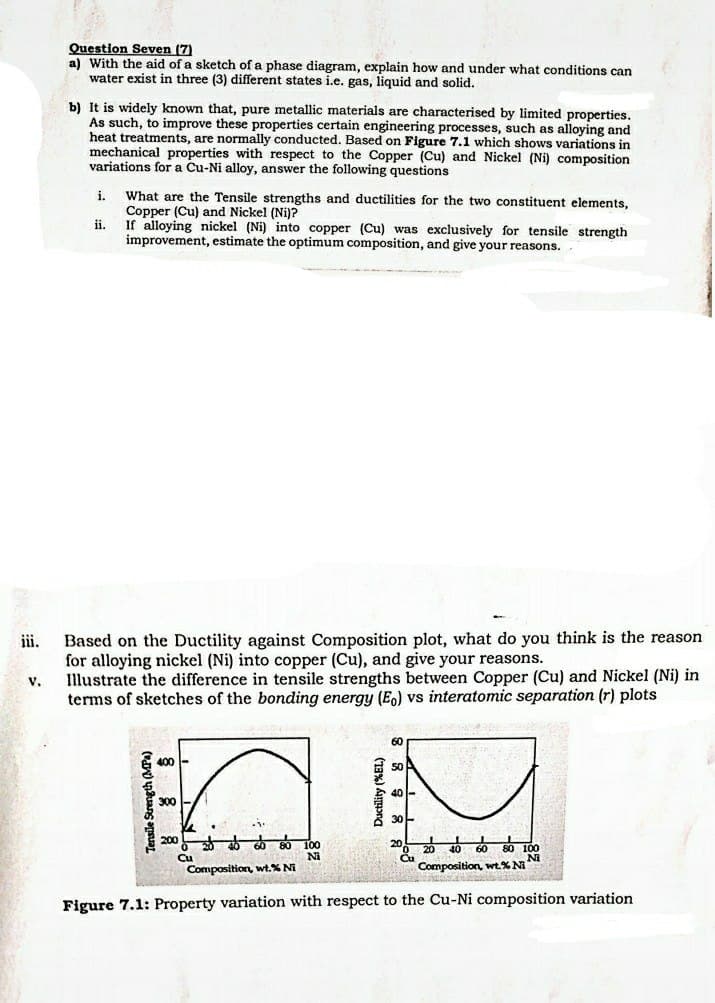Question Seven (7) a) With the aid of a sketch of a phase diagram, explain how and under what conditions can water exist in three (3) different states i.e. gas, liquid and solid.
Question Seven (7) a) With the aid of a sketch of a phase diagram, explain how and under what conditions can water exist in three (3) different states i.e. gas, liquid and solid.
Welding: Principles and Applications (MindTap Course List)
8th Edition
ISBN:9781305494695
Author:Larry Jeffus
Publisher:Larry Jeffus
Chapter26: Welding Metallurgy
Section: Chapter Questions
Problem 12R: What is a eutectic composition?
Related questions
Question
Please Answer the all of part 7

Transcribed Image Text:Question Seven (7)
a) With the aid of a sketch of a phase diagram, explain how and under what conditions can
water exist in three (3) different states i.e. gas, liquid and solid.
b) It is widely known that, pure metallic materials are characterised by limited properties.
As such, to improve these properties certain engineering processes, such as alloying and
heat treatments, are normally conducted. Based on Figure 7.1 which shows variations in
mechanical properties with respect to the Copper (Cu) and Nickel (Ni) composition
variations for a Cu-Ni alloy, answer the following questions
What are the Tensile strengths and ductilities for the two constituent elements,
Copper (Cu) and Nickel (Ni)?
i.
i.
If alloying nickel (Ni) into copper (Cu) was exclusively for tensile strength
improvement, estimate the optimum composition, and give your reasons.
Based on the Ductility against Composition plot, what do you think is the reason
for alloying nickel (Ni) into copper (Cu), and give your reasons.
Illustrate the difference in tensile strengths between Copper (Cu) and Nickel (Ni) in
terms of sketches of the bonding energy (Eo) vs interatomic separation (r) plots
iii.
v.
400
50
40
300
200
20 40 0 80 00
Cu
Ni
Composition, wt.% Ni
Composition, wt%N
Figure 7.1: Property variation with respect to the Cu-Ni composition variation
Tensile Strength (MPa)
Ductility (%EL)
Expert Solution
This question has been solved!
Explore an expertly crafted, step-by-step solution for a thorough understanding of key concepts.
Step by step
Solved in 2 steps with 1 images

Knowledge Booster
Learn more about
Need a deep-dive on the concept behind this application? Look no further. Learn more about this topic, mechanical-engineering and related others by exploring similar questions and additional content below.Recommended textbooks for you

Welding: Principles and Applications (MindTap Cou…
Mechanical Engineering
ISBN:
9781305494695
Author:
Larry Jeffus
Publisher:
Cengage Learning

Welding: Principles and Applications (MindTap Cou…
Mechanical Engineering
ISBN:
9781305494695
Author:
Larry Jeffus
Publisher:
Cengage Learning